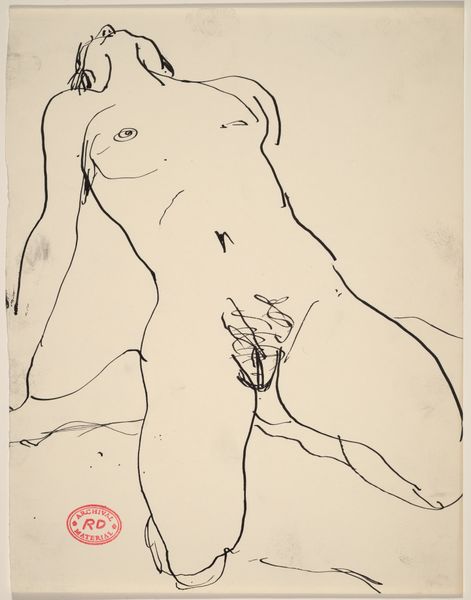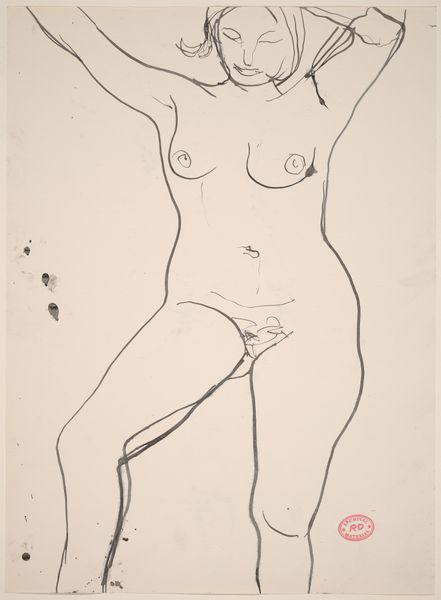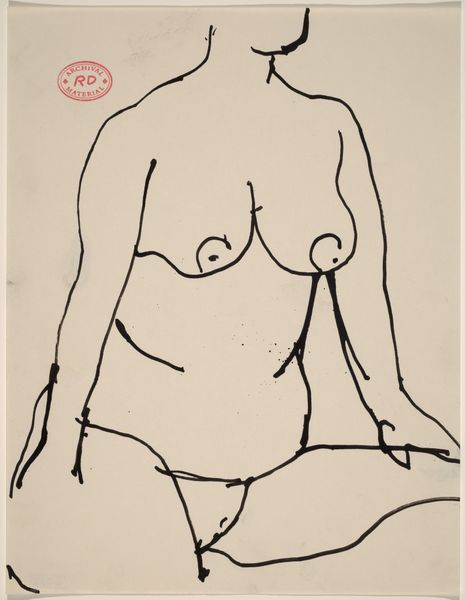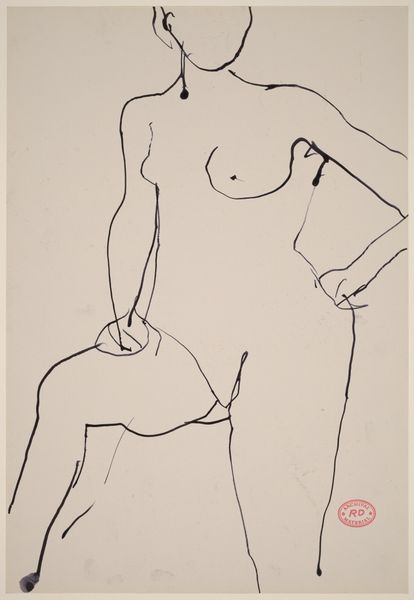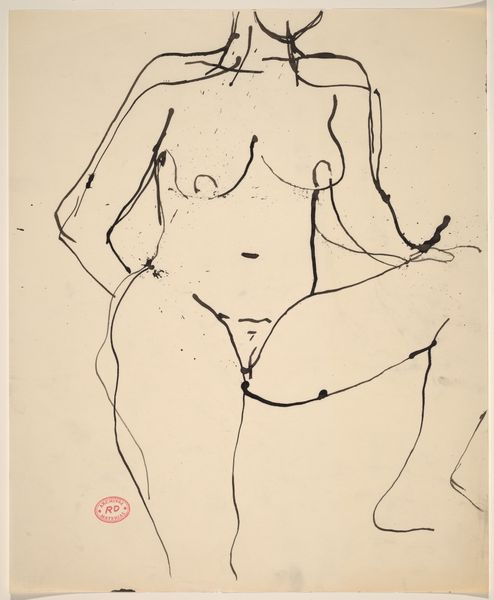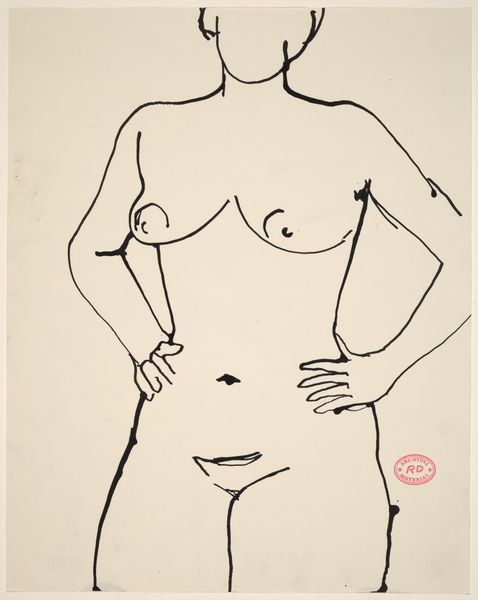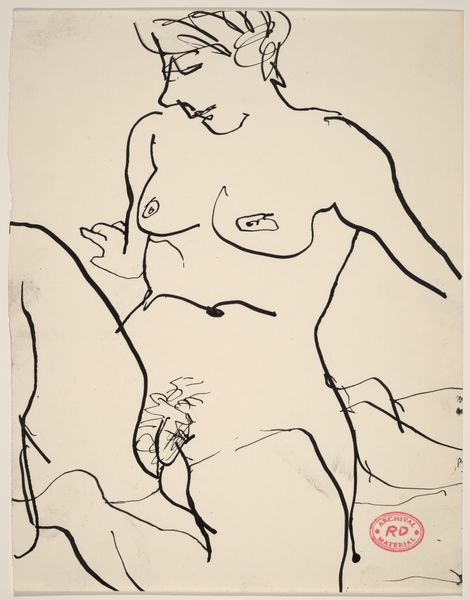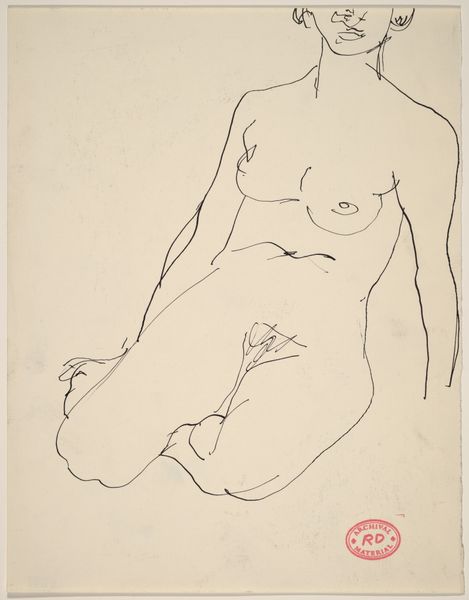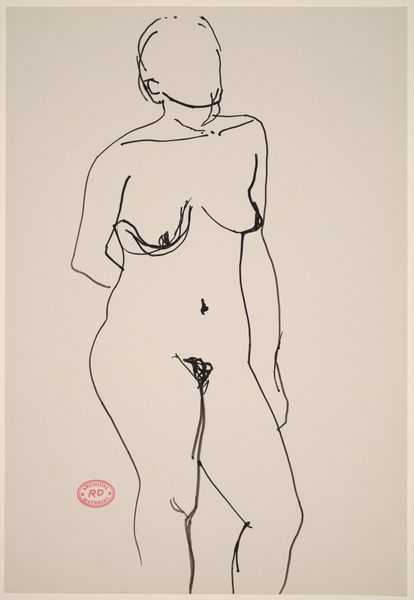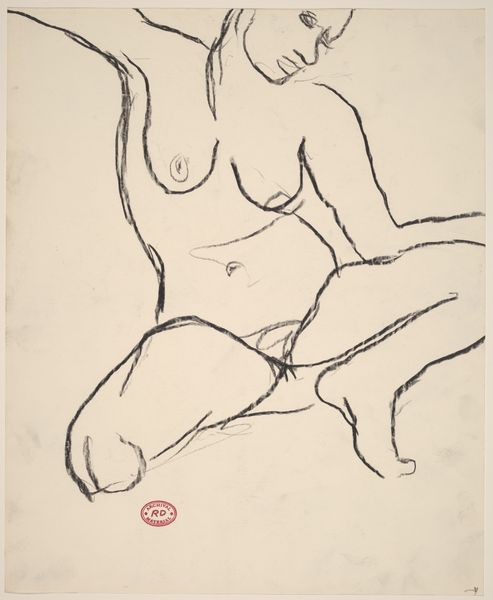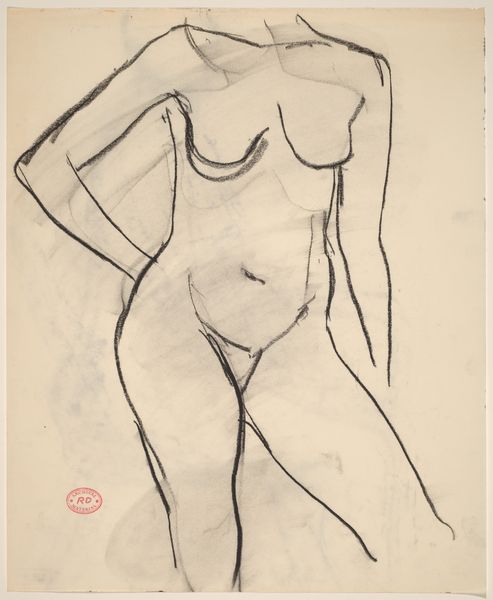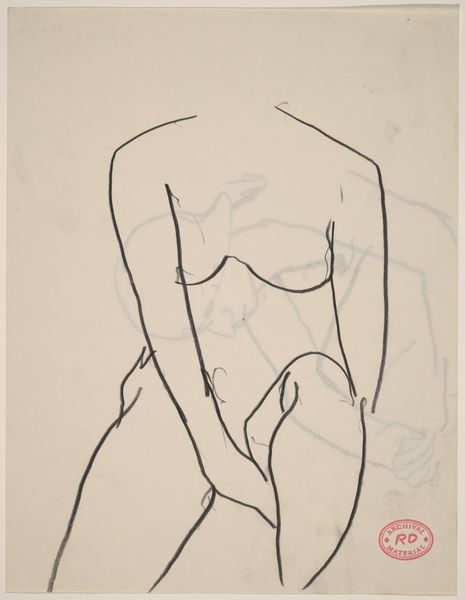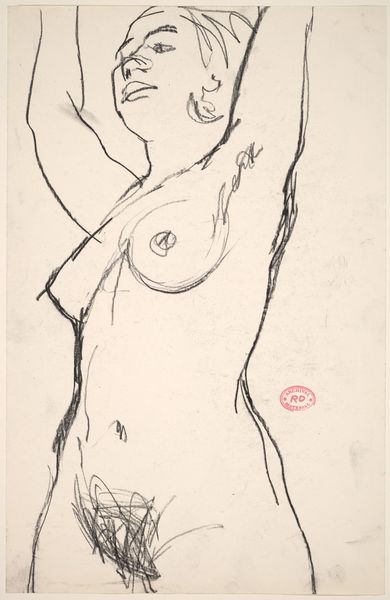![Untitled [kneeling female nude with head tossed back] by Richard Diebenkorn](/_next/image?url=https%3A%2F%2Fd2w8kbdekdi1gv.cloudfront.net%2FeyJidWNrZXQiOiAiYXJ0ZXJhLWltYWdlcy1idWNrZXQiLCAia2V5IjogImFydHdvcmtzLzk0ZTExYmY3LTQ2MDUtNGZhMS1hMWEwLTE5MDBiMjAxNzc2MS85NGUxMWJmNy00NjA1LTRmYTEtYTFhMC0xOTAwYjIwMTc3NjFfZnVsbC5qcGciLCAiZWRpdHMiOiB7InJlc2l6ZSI6IHsid2lkdGgiOiAxOTIwLCAiaGVpZ2h0IjogMTkyMCwgImZpdCI6ICJpbnNpZGUifX19&w=3840&q=75)
Untitled [kneeling female nude with head tossed back] 1955 - 1967
0:00
0:00
drawing, ink
#
abstract-expressionism
#
drawing
#
ink drawing
#
figuration
#
bay-area-figurative-movement
#
ink
#
line
#
nude
Dimensions: overall: 27.8 x 21.7 cm (10 15/16 x 8 9/16 in.)
Copyright: National Gallery of Art: CC0 1.0
Editor: Here we have Richard Diebenkorn's "Untitled [kneeling female nude with head tossed back]," created between 1955 and 1967 using ink on paper. The simplicity of the lines is striking; they convey a sense of immediacy and almost raw emotion. What stands out to you most about the composition? Curator: Indeed, the starkness is central. Notice how Diebenkorn employs line, not to mimic reality, but to construct a system of tensions and balances. The curvature of the spine and the implied arc of the thrown-back head create a dynamic relationship, pushing against the implied boundaries of the paper. The line, as signifier, transcends mere representation. Consider also the negative space. Does it merely define the figure, or does it actively participate in the form’s construction? Editor: It feels active, definitely. The empty space seems just as important as the lines themselves in defining the form. It’s not just a void. I’m curious, though, does the lack of shading contribute to a feeling of detachment? Curator: Detachment perhaps, or rather a distilled essence. The absence of tonal gradations focuses our attention on the line's inherent properties: its weight, direction, and the intervals it creates. Through reduction, Diebenkorn invites us to analyze the formal relationships at play, shifting focus away from conventional modes of viewing the figure towards an engagement with the abstract underpinnings of representation itself. How does this altered focus affect your experience? Editor: I see it now. I was initially drawn to the implied narrative, but focusing on the line work really reveals the deliberate construction and underlying abstract structure. Curator: Precisely. The drawing then becomes not simply a depiction, but a meditation on form itself, a dialogue between the artist, the medium, and the viewer's perceptual processes. Editor: This has given me a completely new perspective on approaching abstract figuration. I'll be paying much closer attention to the role of negative space moving forward!
Comments
No comments
Be the first to comment and join the conversation on the ultimate creative platform.
